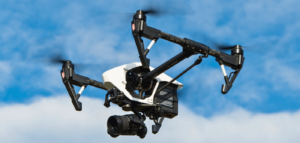
Whether you’re an avid camper, hiker, or emergency prepper, choosing the right flashlight means understanding its brightness rating in lumens. Lumens indicate how much total light a flashlight can produce, but there’s more to brightness than just big lumen numbers.
This straightforward guide will explain exactly what lumens measure, how they relate to real-world flashlight performance, and how to choose the perfect brightness for your needs. Let’s shine some light on deciphering those lumen ratings!
What are Lumens?
In simple terms, lumens measure the total amount of visible light a flashlight is able to produce. Specifically, lumens measure the entire light output of the flashlight at the source.
Lumens do not measure the intensity or distance of the focused beam. Instead, lumens only quantify the total light coming directly out of the flashlight, before any focusing takes place.
This makes lumens very different from candlepower, which measures beam intensity rather than total output. Candlepower ratings can be confusing, as the same flashlight may have different candlepower at different distances. Lumens offer a more consistent rating of flashlight brightness.
For comparing different flashlights, lumen ratings are therefore more useful than candlepower ratings. Greater lumen levels reliably indicate a brighter overall light output.
Why Lumens are Important
Lumens provide an standardized way to compare the brightness between different flashlights. Even flashlights with very different beam types and patterns can be easily compared using their lumen outputs.
Greater lumens also generally indicate a larger lighting capacity in terms of covering area. A 500-lumen flashlight will light up a much broader area than a 100-lumen flashlight, for example.
Finally, there is no upper limit to how many lumens a flashlight can have. New high-output LED bulbs continue pushing maximum lumen levels higher. More lumens means more light, so it’s an easy concept to grasp.
How Lumens Measure Brightness
While candlepower ratings can be misleading, a flashlight’s lumen rating gives a true measurement of its total light output. Here are some key facts about how lumens indicate brightness:
- Lumens measure output at the LED/bulb, not the beam intensity.
- The same flashlight can have varying candlepower based on distance, but the lumen output remains fixed.
- Higher lumen levels always indicate greater total light production.
- The intensity and focus of the beam depends on reflector and lens design, not just lumens.
In summary, lumens reveal the power of the flashlight’s light source before any focusing of the beam. Think of lumens as the raw light available to be focused, while beam distance and intensity depend on reflector efficiency.
This means two flashlights with identical 1000-lumen outputs could have very different focused beam intensities, depending on the quality of their reflectors. So consider both lumens and beam focusing ability when selecting your perfect flashlight.
Why Run Time Matters Too
One tradeoff of extremely high-lumen flashlights is shorter runtime. The more lumens you pack into a light, the faster it will drain the battery.
A massive 2000-lumen flashlight may only run for an hour, while a 250-lumen flashlight may run for 6 hours on the same battery. Brighter isn’t always better if it means your flashlight battery dies quickly.
When evaluating flashlights, consider their runtime ratings at various outputs. A mode with lower lumens but longer runtime is ideal when extended use is needed.
Key Variables that Impact Brightness
- Total LED power (lumens)
- Battery capacity and voltage
- LED bulb quality – affects efficiency and heat management
- Reflector design – reflects and focuses available light
- Lens quality – improves or reduces beam intensity Getting the highest real-world brightness relies on optimizing all these factors. Just purchasing the flashlight with the most claimed lumens isn’t enough.
You need an efficient LED, effective heat dissipation, quality reflector, good batteries, and more. Don’t fixate too much on just the lumen rating when comparing flashlights.
Light Distribution Patterns
The way a flashlight is designed to distribute its light also impacts perceived brightness:
- Spotlights – highly focused, narrow beam
- Flood lights – wide, diffused beam
- Adjustable beams – combine spot and flood
Spotlights maximize beam intensity, while floods maximize the lit area. Consider both lumens and beam style for your needs.
For example, a 300-lumen adjustable flashlight may appear brighter than a 500-lumen pure flood flashlight when used to spotlight objects at a distance.
Lumen Levels for Common Uses
To choose the right brightness flashlight, consider how many lumens you really need for your intended uses. Here are some examples of common lumen levels required:
Everyday Carry Flashlights – 100 to 200 Lumens
For a compact EDC flashlight you can carry in a pocket every day, 100-200 lumens is often ideal. This provides enough light for everyday tasks like:
- Finding keys in the dark
- Navigating at night
- Reading a map
- Inspecting dark areas close-up
Higher lumens in small EDC lights creates heat issues that impact performance and battery life. For infrequent everyday use, a 100-200 lumen EDC flashlight is ample brightness.
Night Hiking and Camping – 200 to 400 Lumens
For navigating camping trails at night or finishing chores after sunset at a campsite, a 200-400 lumen flashlight is recommended.
This level provides visibility out to 100+ feet, allowing you to:
- Follow trails and avoid obstacles
- Set up tents and gear after dark
- Find firewood and gather water at night
- Light up a cooking/eating area
- Locate hiking partners or campers
The 200-400 lumen range balances sufficient brightness with reasonable battery runtimes. For navigating nature at night, this mid-range output is ideal.
Search and Rescue – 500 to 1000+ Lumens
For critical search and rescue work at night, professional teams often use 500+ lumen flashlights or spotlight-style beams.
Extremely powerful 1000+ lumen lights can light objects over 300 yards away. Key advantages include:
- Spotting lost hikers from long distances
- Illuminating dense terrain and forests
- Signaling locations to rescue helicopters
- Avoiding injury on unstable terrain
The needs of search and rescue crews are specialized. For lighting up very large outdoor areas, 500+ lumen lights provide essential brightness along with spot beams to maximize distance.
Law Enforcement and Military – 1000+ Lumens
Police, security, and military personnel use high-powered 1000+ lumen flashlights able to induce temporary blindness and disorientation.
Key uses include:
- Temporarily disorienting suspects
- Quickly illuminating inside vehicles
- Identifying threats in low light conditions
- Signaling alerts and locations
These lights feature extremely focused beams combined with blindingly bright 1000-3000+ lumen outputs. Runtime is less important than maximum lighting capacity.
Other Factors that Affect Brightness
While lumens quantify a flashlight’s potential light output, several other factors affect its real-world performance:
Beam Distance
Beam distance, often measured in yards or meters, indicates how far a flashlight can project a useable beam. This depends on:
- Tightness of the beam focus
- Reflector efficiency in concentrating light
- Atmospheric conditions affecting light transmission
A 100-lumen flashlight with a tight focus may reach 100 meters, while a 500-lumen flood light only reaches 50 meters. Beam style is key.
LED Bulb Efficiency
Lumens measure total potential light, but the LED quality affects what percentage of lumens come out as usable light.
Higher quality LEDs convert electricity to light more efficiently. Conversely, lower quality LEDs waste lumens as excess heat.
So two 1,000 lumen flashlights can have much different real-world outputs based on LED efficiency despite the identical rating.
Reflector Design
As discussed previously, the reflective cone or surface inside a flashlight plays a major role in concentrating the available lumens into an intense and focused beam.
A high-quality parabolic reflector maximizes candela (beam intensity) for a given number of LED lumens. A poorly designed reflector wastes lumens.
Lens Quality
The lens in front of the reflector or LED focuses and shapes the beam of light photons. A lower quality lens can cause unwanted diffusion, reducing beam intensity.
Quality flashlights use coated glass or plastic lenses to optimize light transmission and beam characteristics.
Buying Tip: Prioritize Needs over Lumens
When buying a flashlight, avoid fixation on simply getting the model with the highest lumens. Consider these tips:
- Determine your realistic lumen needs based on planned usage.
- Recognize runtime tradeoffs of very high lumen lights.
- Consider beam style – spot vs. flood vs. adjustable.
- Check reflector and lens quality in addition to lumens.
- Ensure robust heat management for sustainable performance.
Getting caught up in advertising claims of extremely high lumens can lead to choosing the wrong flashlight. Think about your real-world needs first when selecting brightness and features.
Conclusion: Understanding Flashlight Lumens
In summary, lumens measure a flashlight’s total potential light output, not its beam intensity or distance. Greater lumens indicate a brighter light, but several other factors affect real-world performance.
Consider your specific needs in terms of desired brightness, runtime, beam style, and usage. A basic 100-lumen flashlight could be optimal for closet lighting, while search teams require 1000+ lumens.
Lumens provide a valuable starting point for comparing flashlights. But also evaluate reflector quality, lens design, battery life, and heat management when choosing your perfect flashlight.
Getting caught up in manufacturer lumen claims can lead to disappointment. By understanding exactly what lumens measure and how real-world brightness is affected by other factors, you can choose the ideal flashlight for your lighting needs.



